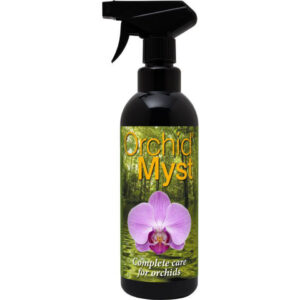Phalaenopsis Orchid Care
Phalanopsis orchids, commonly referred to as moth orchids, are among the most beloved and exquisite orchid varieties. With the correct care, they can flourish and produce magnificent blossoms that can endure for months. Follow this care guide to ensure the well-being of your Phalaenopsis orchid.
1. Light Requirements
Ideal Conditions:
- Provide bright, indirect light. They thrive in east-facing windows
where they receive morning sun or in shaded south/west-facing windows.
Avoid:
- Direct sunlight in the summer months, as it can scorch the leaves.
Signs of Light Issues:
- Dark green leaves indicate insufficient light.
- Yellowish-green leaves or scorched spots indicate too much light.
2. Temperature and Humidity
Temperature:
- Daytime: (21–29°C (70–85°F)
- Nighttime: (15–18°C (60–65°F)
- Avoid temperature drops below 13°C (55°F) or drafts.
Humidity:
- Maintain 50–70% humidity.
- If the environment is too dry, use a humidity tray, humidifier, or mist the leaves (avoid flowers) in the morning
3. Watering
Frequency: Water every 7–10 days with warm water. In warmer months or dry
environments, water more frequently; in cooler months, less often.
Method:
- Water thoroughly, allowing water to flow through the drainage holes.
- Empty excess water from saucers or pots to avoid root rot.
- Use room-temperature, softened water. Rainwater or distilled water is ideal.
Tips:
- Orchids prefer to dry slightly between watering. Check the potting media in the middle and water when it feels dry about an inch below the surface.
- Over watering is the most common cause of orchid death.
4. Potting & Media
Pot Type:
- Use a pot with drainage holes (clear plastic pots help monitor root health).
- Re-pot every 1–1.5 years or when the media breaks down.
Media:
- Use a well-draining orchid mix, typically made of bark
Re-potting Tips:
- Re-pot after blooming when new root growth begins.
- Remove all old, soggy media and trim dead roots before re-potting (these will feel squishy, keep all plump roots) (available to order via email).
5. Fertilising

Frequency:
Use a good quality orchid fertiliser like ‘Growth Technology Orchid
Myst’. (available to order via email).
- During active growth (spring and summer) and rest periods
(autumn and winter): 2-3 times a week preferably in the
morning. Misting the leaves with full coverage and any top
aerial roots.
6. Flowering & Bloom Care
Bloom Cycle:
- Phalaenopsis orchids typically bloom one to two times a year, with flowers
lasting 3–6 months. - To encourage reblooming, provide the orchid with a decreased nighttime
temperature for a few weeks.
Post-Bloom Care:
After flowers fade, assess the flower spike:
- If the spike remains green, you can cut back to a ‘node’ this will
encourage the nodes to flower and may produce side shoots. - If it turns yellow/brown, cut it back to the base.
7. Pruning & Maintenance
Leaf Care:
- Wipe leaves with a damp cloth to remove dust.
Spike Care:
- Remove dead or yellowing spikes with sterile scissors.
Root Health:
- Healthy roots are firm and green or silver/white.
- Trim black or mushy roots during re-potting.
8. Common Problems & Solutions
Yellow Leaves:
- Over watering, insufficient light, or natural ageing.
Drooping Leaves:
- Dehydration or root rot.
Spotted/Brown Leaves:
- Sunburn or fungal infections.
No Blooms:
- Insufficient light or lack of temperature fluctuation.
Pests:
- Mealybugs, scale, or spider mites: Use a plant-friendly pesticide regularly
(available to order via email) and wipe leaves with insecticidal soap or
neem oil.
9. Seasonal Care Adjustments
Winter:
- Reduce watering but maintain humidity.
- Avoid placing orchids near heaters or drafts.
Summer:
- Increase watering if needed.
- Provide adequate air circulation to prevent overheating.
10. Miscellaneous Tips
Air Circulation:
- Orchids prefer good airflow to prevent disease.
Display Location:
- Avoid placing orchids near ripening fruits (ethylene gas can
shorten flower life).
Companion Plants:
- Avoid placing orchids near plants prone to pests or fungal
infections.
Phalaenopsis orchids are resilient and forgiving, making them a perfect addition to any home. By providing the proper care, you can enjoy their beautiful blooms year after year!
if you require any additional help message us on:
Instagram at cdsplants_
Facebook at CDS Plants
Email at dcplants10@gmail.com.
Happy Growing!!
